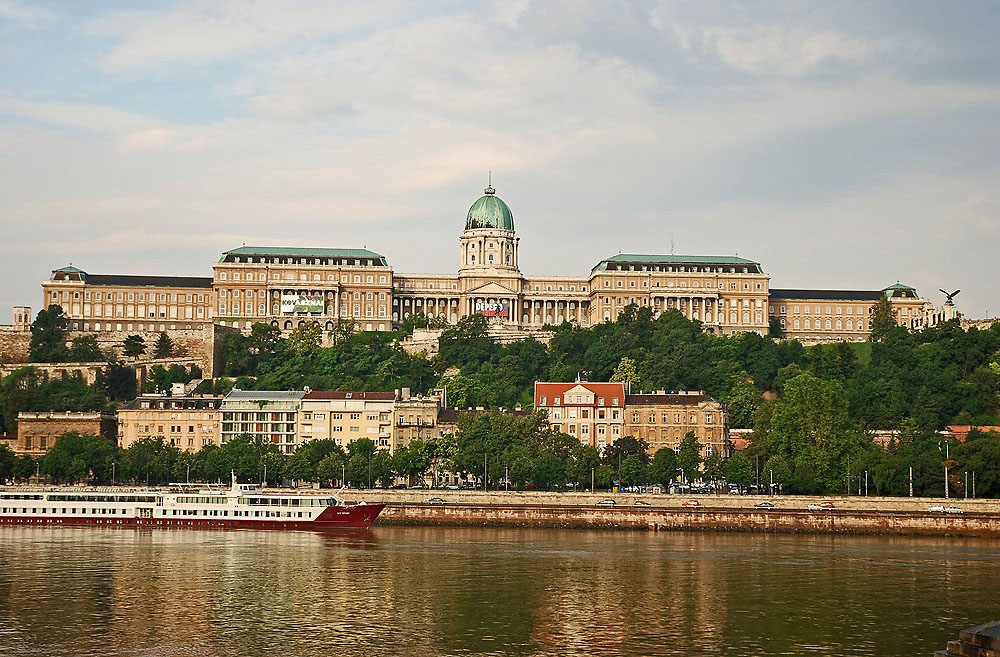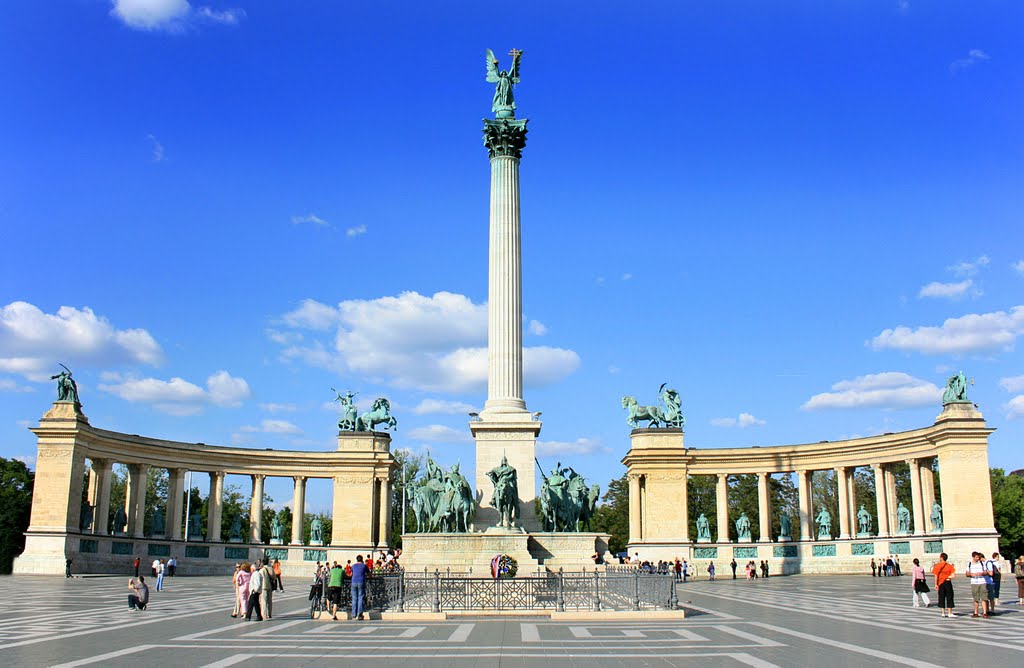
27th-29th June, Budapest University of Technology and Economics, Hungary
ENVIRONMENT - MATERIAL INTERACTION
Preventive conservation of built heritage and industrial archaeology

27th-29th June, Budapest University of Technology and Economics, Hungary
ENVIRONMENT - MATERIAL INTERACTION
Preventive conservation of built heritage and industrial archaeology
Often described as the "Little Paris of Middle Europe", Budapest is famous not only for the monuments reflecting its own 1,000-year-old culture, but also for the relics of others who settled here. Remains from both Roman occupation and much later ruled by the Turks can still be seen in the city. After the Ottoman Empire the union with Austria has a particular influence on the city's form and style.
The capital has two sides, Buda and Pest, stretching along the banks of the Danube, representing two different characters of the city.
Suburban Buda and its historic castle district offer medieval streets and houses, museums, caves and Roman ruins. The dynamic Pest side boasts the largest parliament building in Europe, riverside promenades, flea markets, bookstores, antique stores and café houses.
Budapest has a lot to offer. Museums and galleries, churches and synagogues, palaces and historic buildings, baths and pools are presented together with the influence of Secession in the city.
There is an unmistakable feeling that something out of the ordinary is just around the corner, but what it will be is up to you to find out...
World heritage sites
Danube panorama and Castle district
The UNESCO World Heritage Committee has listed the view of the Danube embankments and the Buda Castle District - which is one of the most beautiful and romantic parts of the city of Budapest - as a World Heritage site on the 11th of December, 1987. The latter is an ancient town district, giving home to some of the most important historical monuments in Hungary. While nearly 800 years passed since it has been originally founded, its beauty still stands unparalelled, despite earthquakes, fires, sieges and world wars. The buildings themselves in Budapest bear tell-tale signs of recent and ancient history.

Both the Pest and Buda embankments of the Danube streching from the Liberty Bridge all the way up to the Margaret Bridge, the area encompassed by the Chain Bridge and some of the buildings belonging to the Technical University, the Gellért Bath, the Gellért Hill with the Statue of Liberty and the Citadel, the Castle of Buda, the Baroque churches and Turkish baths of the so-called Water Town - these are all parts of the World Heritage today.
On the Pest embankment of the Danube, the listed items are the Parliament building, Roosevelt Square, the Academy of Sciences and the Gresham Palace (which today gives home to the Four Seasons Hotel).
There is much, much more to the Castle District than just a royal palace or a castle. This is also where the historical old town district is situated, with countless venues from where the beautiful panorama of Budapest may be admired. The visitors get a distinct feeling that they have travelled back in time, to a different, totally tranquil world, where the doorways of the Baroque residential homes hide historical Roman stones and beautifully carved sediles from the times of knights.
The former Royal Palace and its supply buildings are an organic but separate part of the Castle District. Some of today's most important cultural institutions, such as the Budapest History Museum (Wing E, southern end of the building), as well as the Hungarian National Gallery (Wings A-B-C-D) and the Hungarian National Library, named after the founder Ferenc Széchenyi (Wing F) have moved to the Royal Palace. The formal residence of the Prime Minister, the Alexander Palace, is the President's Residence and home today.
The most visited site is Trinity Square, dominated by one of Budapest's most characteristic building, the Mathias Church, which is over 700 years old. The church itself is almost of the same age as the Royal Palace, and gave home to many coronation ceremonies. Many kings and emperors left their mark on the church, even before the Turkish occupation, when the church was converted into a mosque and its walls whitewashed. Inside lie in their sarcophaguses King Béla the 3rd and his Queen; many visitors also visit the church for its vast ecclesiastical collection. Today's version of the church was finalized at the turn of the 19th century, when several smaller buildings were annexed to it and it was renovated in the Neo-Gothic style. It gives home to a great many concerts, due to its excellent acoustic properties. The Gothic tower of the Mathias Church, with the Fishermen's Bastion in the background, is one of the most frequently photographed tourist sites in Hungary.
Trinity Square also boasts the Baroque-style former Town Hall (today it's the Collegium Budapest building, housing the Hungarian House of Wines among many things), the Neo-Gothic former Ministry of Finance, St. Stephen's statue and the Fishermen's Bastion. The latter was designed and built between 1895 and 1902, replacing the former castle wall, and it offers breathtaking views of Budapest.
Next to Trinity Square stands the Hotel Buda Hilton, the first post-war modern international luxury hotel in Budapest, combining old and new with some success. The courtyard of the hotel encompasses the ruins a 13th-century Dominican cloister, and on the inside are the ruins of a church, giving home to summer theatre performances.
The depths of Castle Hill hides the Buda Castle Labyrinth, while the on the surface centuries' worth of cultural heritage remains. The cave labyrinth's enormous size is best described by the fact that during WWII, 20,000 German soldiers fit in there. The Buda Castle Labyrinth can be very dangerous for those who don't know this underworld city, but is is safely explored with a proper local guide. Before the arrival of the Magyars (Hungarians) in the 9th century AD, Celts and Romans have inhabited the area. The royal residence was moved here by Béla the 4th from Esztergom, following the Tatar invasion in 1241-42, because it was more fortifiable.
The Castle and its beautiful buildings are in strong architectural unity with the rows of residential homes on the Danube embankment and with the medieval Rudas Baths, as well as with the rocks of the Gellert Hill and the bridges spanning accross the Danube.
The oldest one of these bridges in the Chain Bridge, erected in 1849. The sleekest one is Erzsébet (Elizabeth) Bridge, which was one of the first suspension bridges in the world. The youngest one of them is Lágymányosi Bridge in the south, built to provide relief to the city nearly crippled by its newfound heavy vehicle traffic.
Accross the Danube, in Pest, stands the predominant House of Parliament, the Neo-Gothic star edifice by Imre Steindl master architect. Not far behind from it is the biggest church of Budapest, St.Stephen's Basilica, whose height is equal to that of the Parliament (96 metres). Not far from there, at the Pest bridgehead of the Chain Bridge stands the monumental Academy of Sciences. This part of the Pest side is crowned by the Secessionist building of the Gresham Palace, giving home to Budapest's most elegant hotel, the Gresham Four Seasons. The wonderful panorama is completed by the row of luxury hotels on the Danube embankment and the elegant buildings of the Redoute (Vigadó).
Andrássy Avenue and Heroes Square
Heroes' Square along with its surroundings, and Andrássy Avenue with the Millenium Underground Railway have joined the Buda Castle District and the view of the banks of the Danube on the UNESCO World Heritage List in the year 2002.
The avenue, named after former Prime Minister of Hungary Gyula Andrássy, is two and a half kilometres long and has three distinct parts. Its downtown section, a 1-kilometre part streching from Bajcsy-Zsilinszky Avenue all the way to the eight-sided Oktogon square, is lined with rows tall residential apartment houses and expensive shops in the housefronts. In its midsection, from Oktogon to Kodály Körönd, two tree-lined esplanades run parallel to the pavement, which used to be paved with wooden cubes for the sake of the nobility on horseback (today this part is a bicycle path and a walkway). The third part, between Kodály Körönd and Heroes' Square, the houses are farther away from the road, which widens at this point, and gives space to the magnificient mansions and villas, which, with their luxurious tranquil atmosphere, give the impression of a wealthy country town.

The road track of the most beautiful avenue of Budapest was decided upon in the year 1872. In about a decade from then, nearly all the buildings were ready; this is where Budapest's eclectic architectural heritage is found today. Many beautifully carved apartment buildings hide fountains, statues and breathtaking inner spaces and courtyards.
In the downtown part of the avenue, some say that the most impressive building is the State Opera House, others think that the former Institute of Ballet deserves this title. This part of the avenue also gives home to the Old Academy of Music, the Old Art Hall and the Budapest School of Performing Arts.
Between Oktogon and Kodály Körönd is a blue but gloomy building, which used to house the secret police of the Nazis in World War II, and also the state police of the Communist regime, the dreaded AVH. Today it is a museum called the House of Terror, commemorating the victims of these brtutal regimes in a permanent exhibition.
Between Kodály Körönd and Heroes' Square stands the recently renovated 5-star Hotel Andrássy, designed by the 1896 Athens Olympic champion swimmer Alfred Hajos. The Neo-Renaissance building of the Art School of Budapest, and the apartment-museum depicting the life of Zoltán Kodály are also in this part of the avenue.
The first underground railway of continental Europe, the Millenium Underground was built under Andrássy Avenue. Used by the public since the year 1896, it is still an important part of Budapest's transport system. The line was later extended to be able to transport people to new parts of the city beyond Heroes' Square in 1973.
Heroes' Square
Heroes' Square, where Andrássy Avenue concludes, is the biggest and most impressive square of Budapest. In the middle stands the Millenium Monument, with Archangel Gabriel on top, holding the double cross of Christianity and the Holy Hungarian Crown.
It was constructed to mark the 1000th anniversary of the arrival of the Magyar tribes. The pedestal below is occupied by the ornate horseback statues of the seven Hungarian leaders who led the Hungarian nation into the Carpathian Basin in 896 AD. The middle of the square is dominated by the Tomb of the Unknown Soldier, wreathed by all heads of state when officially visiting Hungary. The left side of the is bordered by the Museum of Fine Arts, which holds the world's second largest collection of Spanish Art, on the right side is the Art Hall, giving home to temporary exhibitions in Budapest. Behind Heroes' Square, the City Park Lake is perfect for boating in the summer, and ice-skating in the wintertime (the ice is artificial and of good quality). The entertainment and cultural facilities of the City Park (Budapest Zoo, Funfair, Municipal Circus, Vajdahunyad Castle, the museum of Agriculture and Transport, the Petőfi Cultural Hall and the Széchenyi Thermal Bath) are among the most sought after tourist sights in Budapest.